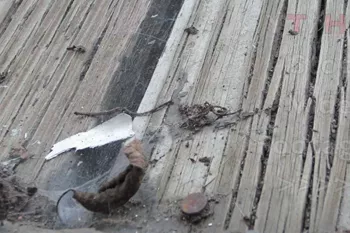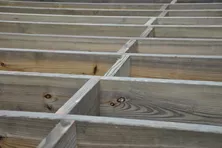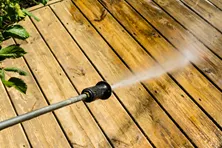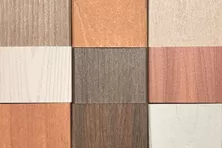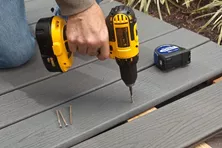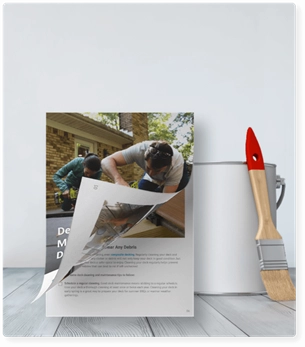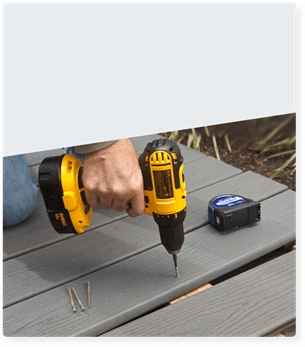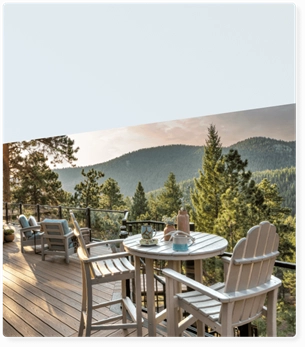What is Dry Rot and How Can You Prevent Your Deck From Rotting?
What is Dry Rot?
Some older decks will begin to show signs of dry rot. The symptoms include spongy and discolored wood that may flake off and fall apart when wet. You can use a screwdriver to test the wood for soft spots. In certain conditions, even pressure-treated wood can rot and decay. Moisture and pooling water on decks can lead to rot and decay. Because dry rot is a fungus, it can spread like a cancer throughout a deck. Dry rot is caused by microorganisms that eat the cellulose from the wood leaving it brittle. Dry rot will also attract wood-eating insects such as termites, which will compound the problem.
How Dry Rot Forms
Moisture is the enemy when it comes to your deck; it creates a breeding ground for mildew, mold and fungus. If your deck has been exposed to high levels of condensation or any continuous source of water, you may be in the early stages of dry rot. Under these conditions, it does not take long for wood-digesting fungi to invade and begin to compromise the safety and integrity of your deck.
To prevent rot, you must prevent – or at least limit – your deck’s exposure to moisture. You can do this through a regular cleaning and inspection schedule. An annual cleaning will keep your deck looking aesthetically appealing on the surface, but more importantly, cleaning can help forestall repairs, such as rotten decking, by ridding early signs of dirt, mildew and bacteria buildup. And, having your deck professionally inspected every two years will help ensure you are aware of and know how to remedy any source of moisture that may develop, before it has a chance to do serious harm to your deck.
Rot-Resistant Woods And Composite Decking
Another way to prevent your deck from rotting is to build it with redwood, mahogany, cypress or cedar, each of which are among the most rot-resistant species of natural wood. Nonetheless, a wood deck, by its very nature, will always be susceptible to moisture and rot. You will still need to perform ongoing maintenance to keep your deck clean and dry, and to protect its longevity.
Alternatively, you may want to consider composite decking material, which is longer-lasting, easier and less time-consuming to maintain. How? Simply because composite decking does not rot. Composite decking is made from moisture- and insect-resistant materials that are stronger and more durable than wood, and require minimal upkeep. For example, a deck constructed with composite material never needs to be painted or stained. In addition, most composite decking materials come with a lengthy manufacturer’s warranty.
Signs & Causes of Dry Rot on Decks
Untreated wood is susceptible to rot and decay over time if exposed to moisture, mold and insect damage. The most common and most serious rot issues involve an incorrectly installed ledger board that allows moisture to penetrate the house wall. Because the house framing is not treated, it is much more likely to rot. If your ledger board is infected with rot, you will likely need to replace the entire deck. You may also need to repair portions of the house wall. If a few joists or some decking is rotting, you may be able to remove and replace only the affected pieces.
How to Identify Dry Rot on a Deck
Some older decks will begin to show signs of dry rot. The symptoms include spongy and discolored wood that may flake off and fall apart when wet. You can use a screwdriver to test the wood for soft spots. You can also tell if deck wood is rotten by checking for these dry rot signs:
- Probe around posts that contact the ground for soft spots as these areas are typically more exposed to moisture.
- Search for long sheets of greyish mold or darker looking wood as these are common dry rot indicators.
- If you notice areas of pest damage, those spots could be a combination of insect damage and dry rot since dry rot attracts termites and other wood-eating pests.
- Inspect the surrounding area of dry rot for a source or cause – plumbing leaks, gutter failure, sprinkler system issue, and any and all other water pooling possibilities.
- Not sure if it’s dry rot? When in doubt, call a professional to come inspect your deck and give you an estimate for repair.
Deck Rot Repair
If you discover areas of dry rot on your deck, those portions must be removed and replaced immediately to prevent it from spreading further. It’s important when replacing rotten deck boards and cracked deck posts to be thorough in your inspection of the compromised areas. Be sure to inspect all areas directly adjacent to the rotten wood, as even early signs of decay will eventually contaminate your recent repairs. If you’re at all unsure about how to identify or fix areas of rot on your deck, call a professional. After all, your deck is an investment and a valuable asset to your home’s value. It’s important to keep it healthy and safe.
How to Prevent Dry Rot on Decks
If your deck does have a run-in with dry rot, there are ways you can prevent it from coming back. First, locate the cause of the dry rot. This could be anything from a plumbing leak, gutter alignment, uneven boards that cause water pooling, a sprinkler system issue and more. Locating and resolving the water source issue will be your biggest anti-rot solution moving forward. In addition, you’ll want to clean your deck regularly to keep it free of dirt and mildew as they can encourage water retention. And finally, make sure to preserve your wood with sealer and/or stain to help keep moisture from penetrating into the wood.
Does Pressure Treated Wood Rot?
Pressure-treated wood does offer protection against rot, but under certain conditions, pressure-treated wood can still break down. How? Because pressure-treated wood isn't fully water-resistant. Without a sealant, pressure-treated wood will soak up and lose moisture, a cycle which causes it to swell and shrink, crack, warp and bend, and basically come apart over time. That’s why it’s important to clean and coat your pressure-treated wood deck with a water-repellant each year, and to inspect your deck on a regular basis, so you can identify any early signs of deterioration before they worsen.
How to Avoid, Prevent & Repair Deck Joist Rot
Rotted deck joists can cause homeowners headaches. Learn more about how to avoid, prevent and repair deck joist rot at Decks.com.
How to Pressure Wash a Deck
Pressure washing your deck is the best way to keep your investment looking like new. Learn how to properly clean your wood deck with these tips from Decks.com.
Capped Composite Decking
What is capped composite decking? It's a great option if you like the look of wood but not the maintenance. Learn about capped composite at Decks.com.
Aluminum vs Composite Decking
Both Aluminum and Composite are great alternatives for traditional wood decking. Learn which material will best suit your home with our full comparison.
TimberTech
TimberTech Decking is manufactured by Timbertech Limited in Wilmington, OH.
More Helpful Resources
Explore Articles by Topic

Footings
Information related to installing frost footings for decks

Framing
Learn structural framing methods

Decking
Learn about wood and composite decking materials

Stairs
An in-depth look at the complex issue of how to build stairs

Railings
How to install guardrails and handrails to meet IRC code

Features
An overview on water drainage, benches, planters and lights

Design
The basics of deck design

Planning
Learn about permits and working with contractors

Porches & Patios
Build a covered deck to enjoy all seasons

Ledger
Proper attachment techniques

Care
Maintain your deck to maintain your investment

Materials
An overview on water drainage, benches, planters and lights
How to Remove Scuffs and Scratches from Composite Decking
Removing scuffs and scratches can help make your composite deck look like new. Learn how to fix and prevent your composite deck from future scratches.
How to Seal Your Deck & Best Deck Sealers
Once you clean or stain a deck, it is ready to be sealed. Learn how to properly seal your deck in order to protect it from damage caused by harsh climates and weather at Decks.com.
Deck Maintenance Checklist
Wondering how to best care for your deck? Download our comprehensive deck maintenance checklist to ensure your deck is safe and lasts for years at Decks.com.
Is Trex Decking Worth the Investment? Expert Insights and Reviews
Discover why Trex decking is worth the investment. Learn about its durability, low maintenance, eco-friendliness, and the long-term value it adds to your home.
Eco Friendly Composite & Wood Decking Options
Looking for the most environmentally friendly way to add a gorgeous deck to your home? Learn how composite decking is made from recycled materials at Decks.com.
Explore Articles by Topic

Footings
Information related to installing frost footings for decks

Framing
Learn structural framing methods

Decking
Learn about wood and composite decking materials

Stairs
An in-depth look at the complex issue of how to build stairs

Railings
How to install guardrails and handrails to meet IRC code

Features
An overview on water drainage, benches, planters and lights

Design
The basics of deck design

Planning
Learn about permits and working with contractors

Porches & Patios
Build a covered deck to enjoy all seasons

Ledger
Proper attachment techniques

Care
Maintain your deck to maintain your investment

Materials
An overview on water drainage, benches, planters and lights




